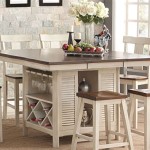Kitchen Faucet With Two Holes: A Comprehensive Guide
The kitchen faucet is a critical component of any functional kitchen space. It facilitates tasks ranging from washing dishes and preparing food to filling pots and cleaning the sink. While kitchen faucets come in various configurations, one common design is the two-hole faucet. This article aims to provide a comprehensive overview of kitchen faucets with two holes, detailing their characteristics, installation considerations, aesthetic aspects, and advantages and disadvantages compared to other faucet types.
A two-hole kitchen faucet, as the name suggests, requires two drilled holes in the countertop or sink deck for installation. Typically, one hole is dedicated to the faucet spout itself, while the second hole is designated for a separate accessory, most commonly a side sprayer. However, the second hole can also accommodate other features such as a soap dispenser, a hot water dispenser, or even a second, smaller faucet. The key defining feature is the physical separation of the faucet spout from any accompanying features through two distinct mounting points.
Understanding the Components and Functionality
The anatomy of a two-hole kitchen faucet typically includes several core components. The faucet body, containing the spout and its internal mechanisms, is the primary element. This body is constructed from durable materials like brass, stainless steel, or a combination of both to ensure longevity and resistance to corrosion. The spout design can vary widely, ranging from high-arc gooseneck spouts offering ample clearance for large pots to low-arc spouts that provide a more streamlined appearance. The spout may also swivel to allow for easy access to different areas of the sink.
The internal mechanisms of a two-hole faucet are responsible for controlling the water flow and temperature. These mechanisms often utilize ceramic disc cartridges, known for their durability and smooth operation. Ceramic disc cartridges typically require a single handle that rotates to control the water temperature and lifts to control the water flow. In some two-hole faucet designs, separate hot and cold water handles are used, each controlling the flow of water from their respective lines. These handles connect to the cartridges within the faucet body, allowing the user to precisely adjust the water temperature to their desired level.
The second hole in a two-hole faucet setup is typically occupied by a side sprayer. The side sprayer provides a focused stream of water that is ideal for rinsing dishes, cleaning fruits and vegetables, and reaching difficult-to-clean areas of the sink. It is connected to the main faucet body via a flexible hose, allowing for a wide range of motion. Side sprayers usually have a lever or button that activates the water flow when pressed. When released, the water flow is automatically shut off. Other accessories that can be installed in the second hole include soap dispensers, which provide a convenient and hygienic way to dispense dish soap or hand soap directly into the sink; hot water dispensers, which provide near-boiling water on demand for making tea, coffee, or instant soups; and separate drinking water faucets, often connected to a filtration system to provide purified water.
Installation Considerations and Requirements
Installing a two-hole kitchen faucet requires careful planning and execution to ensure proper functionality and prevent leaks. Before commencing the installation, it is important to gather the necessary tools and materials. These typically include an adjustable wrench, a basin wrench, a screwdriver, plumber's putty or silicone sealant, Teflon tape, and a bucket to catch any water during the process. It is also crucial to shut off the water supply to the faucet by closing the shut-off valves located under the sink. This will prevent water from flowing out during the installation process and causing damage.
The first step in the installation process is to remove the existing faucet, if one is present. This involves disconnecting the water supply lines from the old faucet and unscrewing the mounting nuts that secure it to the countertop or sink deck. Once the old faucet is removed, the sink and countertop should be thoroughly cleaned to remove any debris or residue. The two holes should be inspected to ensure they are free from any obstructions and are the correct size for the new faucet and its accompanying accessory. The spacing between the holes should also be checked to ensure compatibility with the new faucet's design.
With the sink and countertop prepared, the new faucet can be installed. The faucet body is typically inserted into one of the holes, and the accessory, such as the side sprayer or soap dispenser, is inserted into the other hole. Mounting nuts or washers are then used to secure the faucet and accessory to the underside of the countertop or sink deck. It is important to tighten these nuts securely, but not overtighten them, as this could damage the countertop or sink. Plumber's putty or silicone sealant should be applied around the base of the faucet and accessory to create a watertight seal and prevent water from seeping into the sink or countertop.
After the faucet and accessory are securely mounted, the water supply lines can be connected. Teflon tape should be wrapped around the threads of the water supply lines to create a watertight seal. The water supply lines are then connected to the corresponding inlets on the faucet body. It is important to tighten these connections securely, but not overtighten them, as this could damage the faucet or water supply lines. Once the water supply lines are connected, the water supply can be turned back on. The faucet should be tested to ensure that water flows smoothly and that there are no leaks. If any leaks are detected, the connections should be tightened further until the leaks are resolved.
Aesthetic Considerations and Design Variety
Beyond functionality, the aesthetic appeal of a kitchen faucet is a significant consideration for many homeowners. Two-hole kitchen faucets offer a diverse range of design options to complement various kitchen styles and preferences. The faucet body itself can be found in a variety of finishes, including chrome, brushed nickel, stainless steel, oil-rubbed bronze, and matte black. These finishes can be chosen to match or complement other hardware and appliances in the kitchen.
The spout design of a two-hole kitchen faucet can also vary widely, offering further aesthetic customization. High-arc gooseneck spouts provide a dramatic and elegant look, while also offering ample clearance for filling large pots and pans. Low-arc spouts offer a more streamlined and modern appearance, ideal for smaller sinks or kitchens with a minimalist design. Pull-down or pull-out spouts offer added convenience and flexibility, allowing for easy rinsing and cleaning of the sink. Spout designs can also vary in terms of their shape, with options ranging from curved spouts to angular spouts.
The design of the accompanying accessory, such as the side sprayer or soap dispenser, can also contribute to the overall aesthetic of the faucet setup. Side sprayers can be designed to match the faucet body in terms of finish and style, creating a cohesive and integrated look. Soap dispensers can be chosen in a variety of styles, from sleek and modern designs to more traditional and ornate designs. The placement of the second hole can also influence the aesthetic of the faucet setup. The second hole can be located to the side of the faucet spout, or it can be located behind the faucet spout, depending on the design of the sink and countertop.
Finally, the handles of a two-hole kitchen faucet can also contribute to its aesthetic appeal. Two-handle faucets offer a classic and traditional look, while single-handle faucets offer a more modern and streamlined appearance. The handles can be designed in a variety of shapes and styles, from lever handles to knob handles. The handles can also be finished in a variety of materials, such as metal, ceramic, or even wood. The combination of these various design elements allows homeowners to create a two-hole kitchen faucet setup that perfectly complements their kitchen style and personal preferences.
Advantages and Disadvantages Compared to Other Faucet Types
Two-hole kitchen faucets present both advantages and disadvantages compared to other faucet types, such as single-hole faucets and three-hole faucets. Understanding these pros and cons can aid in making an informed decision when selecting a faucet for a kitchen.
One advantage of two-hole faucets is the flexibility they offer in terms of accessory options. The second hole provides a dedicated space for a side sprayer, soap dispenser, or other accessory, allowing for customized functionality. This can be particularly beneficial for homeowners who value convenience and efficiency in the kitchen. Another advantage is the ability to achieve a balanced aesthetic. The separation of the faucet spout from the accessory can create a visually appealing and symmetrical look, particularly when the faucet and accessory are designed to complement each other.
However, two-hole faucets also have some disadvantages. The requirement for two holes in the countertop or sink deck can limit installation options, particularly if the existing sink or countertop only has one hole. Drilling a second hole can be a challenging and potentially risky task, requiring specialized tools and expertise. Additionally, two-hole faucets may require more plumbing connections than single-hole faucets, potentially increasing the complexity of the installation process and the risk of leaks. The separate accessory may also require additional maintenance and repairs over time.
Compared to three-hole faucets, two-hole faucets offer a more streamlined and minimalist look. Three-hole faucets typically have separate hot and cold water handles, in addition to the faucet spout, resulting in a more cluttered appearance. Two-hole faucets, with their single-handle design or the integration of the handles into the faucet body, present a cleaner and more contemporary aesthetic. However, three-hole faucets can offer more precise temperature control, as the separate hot and cold water handles allow for finer adjustments.

Bwe Modern Double Handle 2 Holes Deck Mount Bridge Kitchen Faucet With 360 Swivel Spout Sink In Polished Chrome C 4080 The Home

Dux 2 Hole Kitchen Faucet 360 Degree Swivel Spout Signature Faucets

Bwe Modern Double Handle 2 Holes Deck Mount Bridge Kitchen Faucet With 360 Swivel Spout Sink In Matte Black C 4079 B The Home

Kohler Simplice Two Hole Kitchen Sink Faucet 649 Vs Rona

Kohler Hirise Two Hole Kitchen Sink Faucet 7337 4 Bs Rona

Nemo Hd Two Hole Stainless Steel Kitchen Faucet With Pull Out Dual Spr Forte Brands

Easton Classic Two Hole Bridge Gooseneck Faucet Lever Handles

Bwe Modern Double Handle 2 Holes Deck Mount Bridge Kitchen Faucet With 360 Swivel Spout Sink In Matte Black C 4080 B The Home

Newport Brass Product Spotlight East Li 2 Hole Pull Down Kitchen Faucet Splash Bath Home

Cobber Cb023 Two Hole Deck Mount Faucet Brushed Nickel Watrline








